London Must-Sees
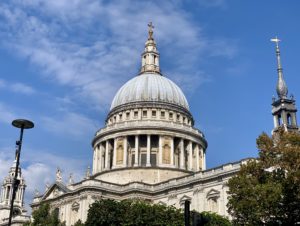 By our third day in London, Lilli, Violet and I felt briskly confident using the Tube; we took it to St. Paul’s Cathedral. I wanted Violet to see Christopher Wren’s dome, the second largest in the world, after St. Peter’s in Rome. I had toured the interior three years ago, but this time we concentrated on the exterior and the garden. Violet took a picture of her mother and me; I captured them together in a phone booth.
By our third day in London, Lilli, Violet and I felt briskly confident using the Tube; we took it to St. Paul’s Cathedral. I wanted Violet to see Christopher Wren’s dome, the second largest in the world, after St. Peter’s in Rome. I had toured the interior three years ago, but this time we concentrated on the exterior and the garden. Violet took a picture of her mother and me; I captured them together in a phone booth.
From St. Paul’s we walked across the Thames River on the Millennial Bridge.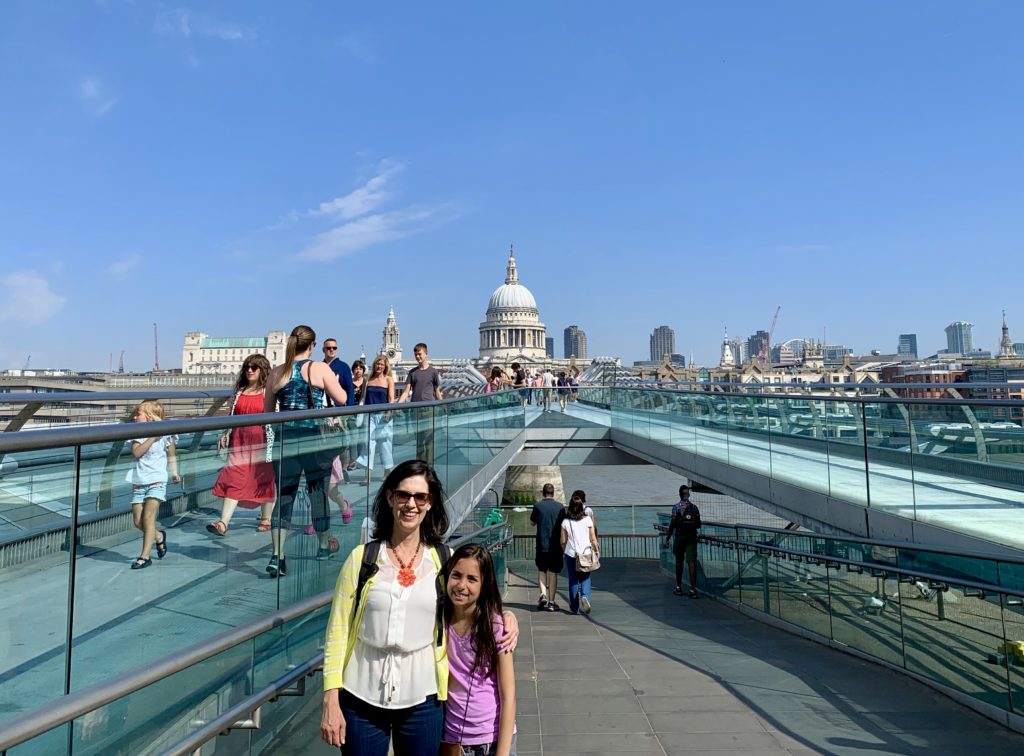
Soon we were immersing ourselves in exhibits at the Tate Modern, one of my favorite museums anywhere. The exhibit on Olafur Eliasson stood out from all the rest, so be sure to read my separate post about that experience. We spent hours learning about all his activities.
In another gallery we saw a large piece that we sort of recognized, but it seemed a little off. At Mass MoCA in Williamstown MA we three had seen many works by Sol LeWitt. Now here was the work of Korean artist, Haegue Yang, born the same year as Lilli, who had been inspired by this 1986 work by LeWitt, Structure with Three Towers: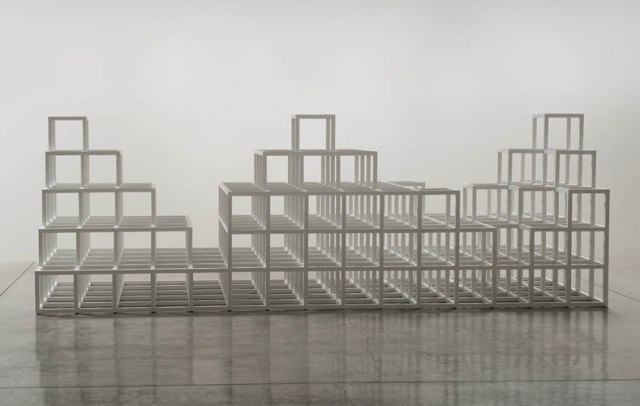
Yang replaced the open-sided cubes of LeWitt’s sculpture with Venetian blinds (!), magnified the overall structure 23 times, divided it into three parts and suspended the work upside down from the ceiling. Now that’s Imagination! I longed to adjust the blinds and see how admitting more light would change it, but I kept my hands to myself.
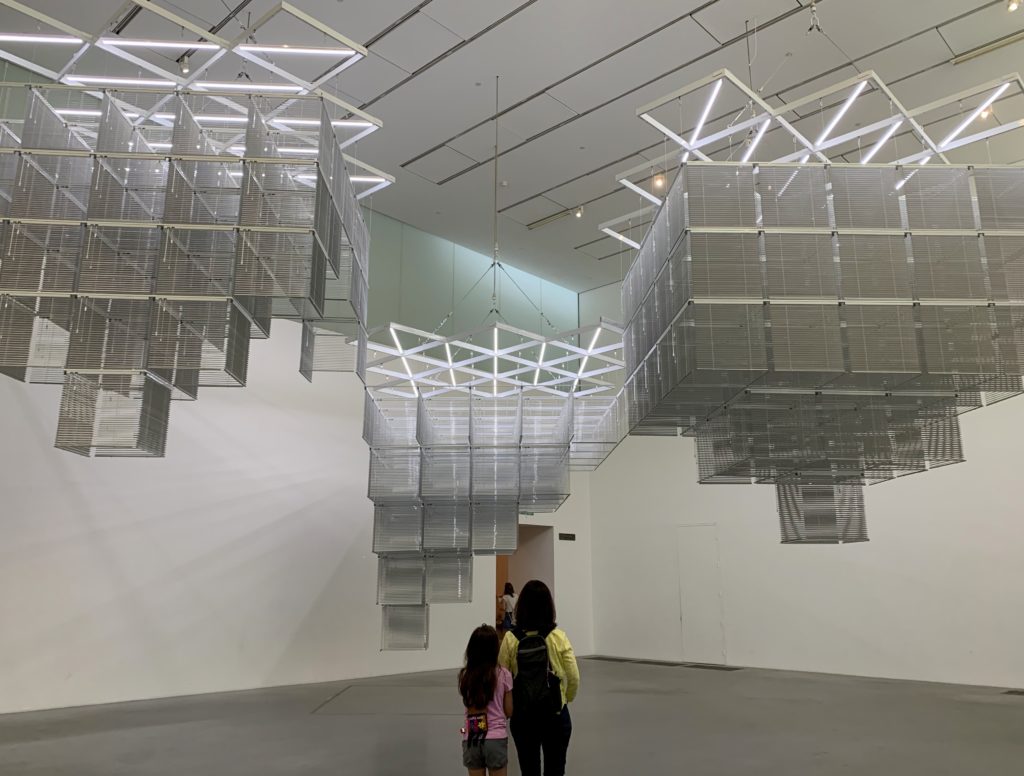
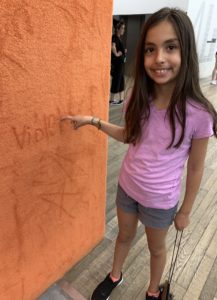 Three years ago, I wrote in my post on London Art Treasures about a certain work at the Tate Modern: “Rudolf Stingel was born in Italy in 1956 and works in the US. His 1993 interactive wall of thick carpet appealed to me. I think all my grandchildren would enjoy making their marks on this work.
Three years ago, I wrote in my post on London Art Treasures about a certain work at the Tate Modern: “Rudolf Stingel was born in Italy in 1956 and works in the US. His 1993 interactive wall of thick carpet appealed to me. I think all my grandchildren would enjoy making their marks on this work.
So it was a special moment when my daughter and granddaughter saw the piece and Violet wrote her name on the carpet. It may not last long, but this photo proves that she was there.
After all this excitement, I was ready to return to the Bailey Hotel and rest up for dinner at Light of India restaurant. Lilli and Violet continued on to the London Eye to see how London looks from above. They had a wonderful time checking off another “Must-See.”
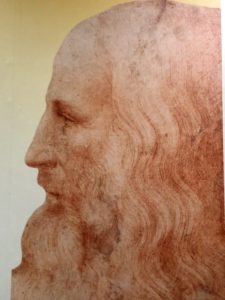 Lisa Craig, our friend who knows London well, recommended that we see the Leonardo da Vinci drawings in a Royal Collections Trust exhibit at Buckingham Palace. While booking those tickets, I also got tickets to see the State Rooms at the Palace. Both tours were winners! We got there early enough to see bands in beaver hats march through the square to begin the Changing of the Guard. The exhibit of drawings that the Palace had kept safe for hundreds of years, inspired me to finish reading Walter Isaacson’s book, Leonardo da Vinci. We couldn’t take photos in the State Rooms, but as we watched episodes of The Crown on Netflix each evening, we recognized the rooms where events happened. The Palace had a very efficient cafe to satisfy our hunger.
Lisa Craig, our friend who knows London well, recommended that we see the Leonardo da Vinci drawings in a Royal Collections Trust exhibit at Buckingham Palace. While booking those tickets, I also got tickets to see the State Rooms at the Palace. Both tours were winners! We got there early enough to see bands in beaver hats march through the square to begin the Changing of the Guard. The exhibit of drawings that the Palace had kept safe for hundreds of years, inspired me to finish reading Walter Isaacson’s book, Leonardo da Vinci. We couldn’t take photos in the State Rooms, but as we watched episodes of The Crown on Netflix each evening, we recognized the rooms where events happened. The Palace had a very efficient cafe to satisfy our hunger.
Big Ben and the Houses of Parliament were under renovation; 10 Downing Street was too heavily fortified to get near. We had already walked over three miles, so we opted for a pedi-cab tour that took us by these and several other Must Sees.
Lilli and Violet had the energy to see one more London landmark, Harrod’s. I relaxed instead. They brought me this photo of Violet with a guard made of Legos. 
On our final day in London, we had three hours for another Must-See before catching our flight back to Boston. Though we knew we had missed the British Museum, the British Library, and the National Gallery, we decided on the Science Museum and it was the right choice for us. Violet zeroed in on hands-on activities in the WonderLab, especially Maths.
A wonderful surprise was encountering a gallery in the Maths section designed by architect Zaha Hadid, who designed the extension to the Serpentine Gallery we had seen in Kensington Gardens. The curved overhead structure and the layout of the gallery is modeled on a wind tunnel for a 1920s plane suspended from the ceiling. Dame Zaha Hadid trained first in mathematics before studying architecture and her practice is strongly informed by ideas about geometry.
When I was growing up in Iraq, math was an everyday part of life. We would play with math problems just as we would play with pens and paper to draw–math was like sketching.”
Zaha Hadid, 2014
Back in Cambridge, we checked off all we had seen in three places, the Mission London Scavenger Hunt Adventure book that Uncle Joe had sent, Violet’s Lego version of London sites, and a puzzle from Aunt Leslie that we put together–tangible ways to remember what we had seen and done in London.
There are many songs about London. This is the one from 1965 kept going through my head.
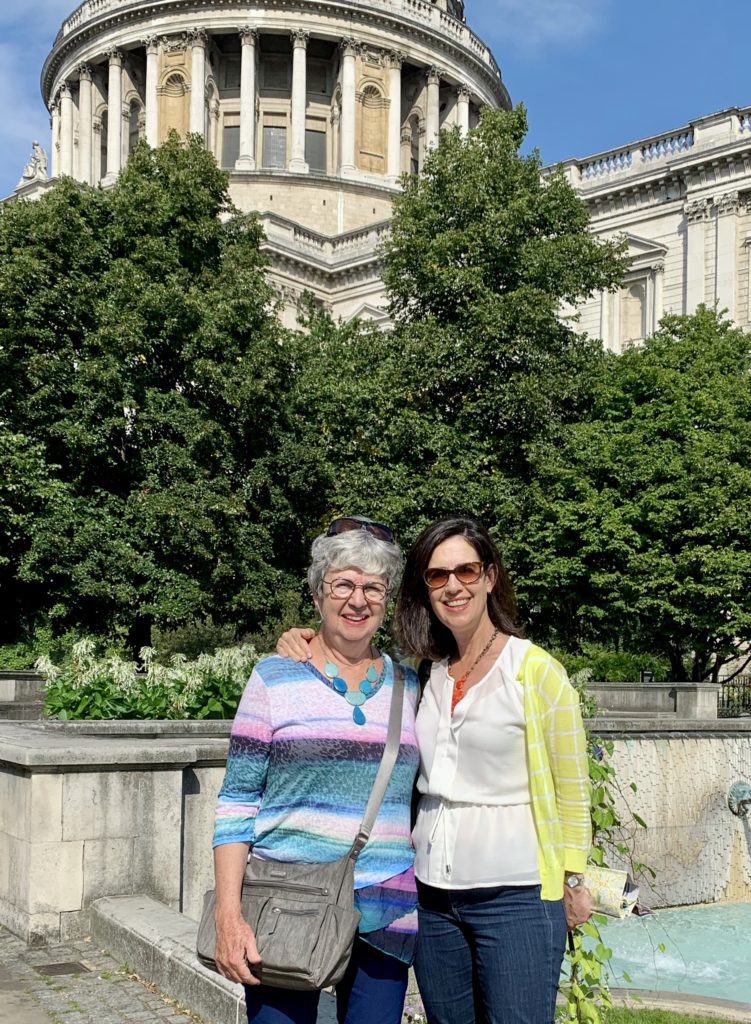
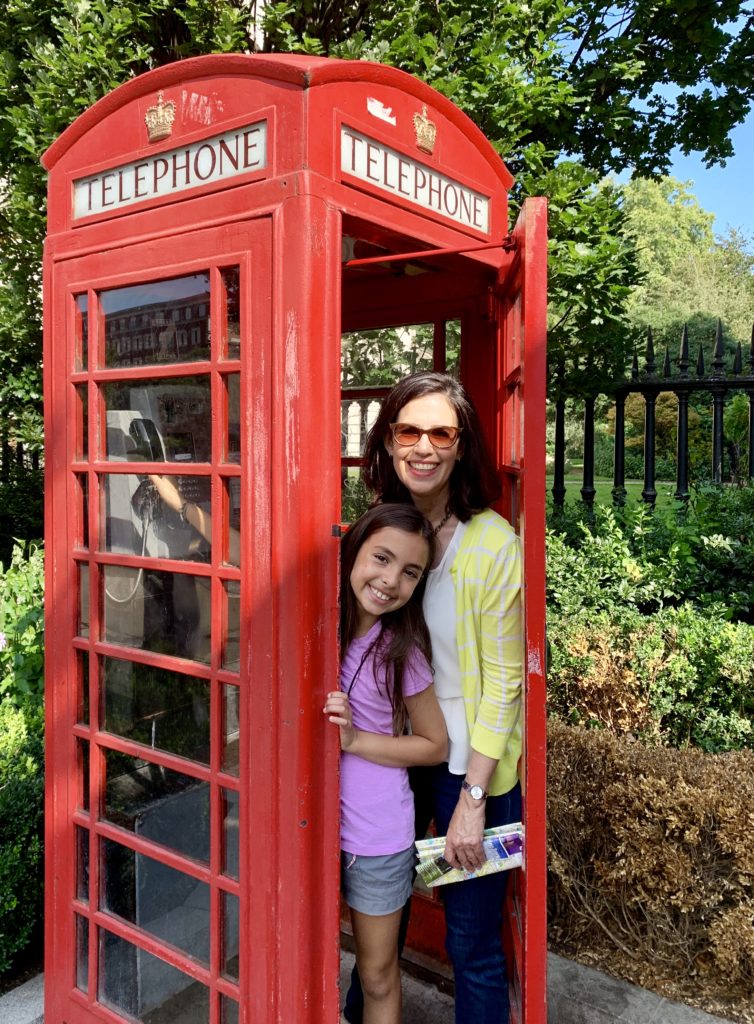
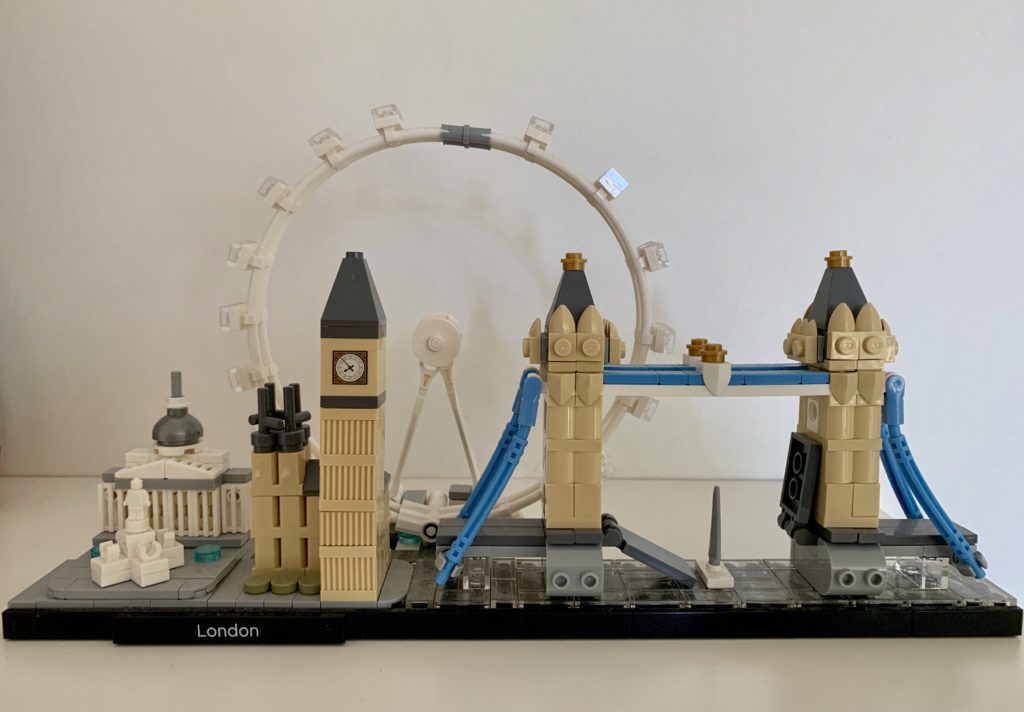

Leave a Reply